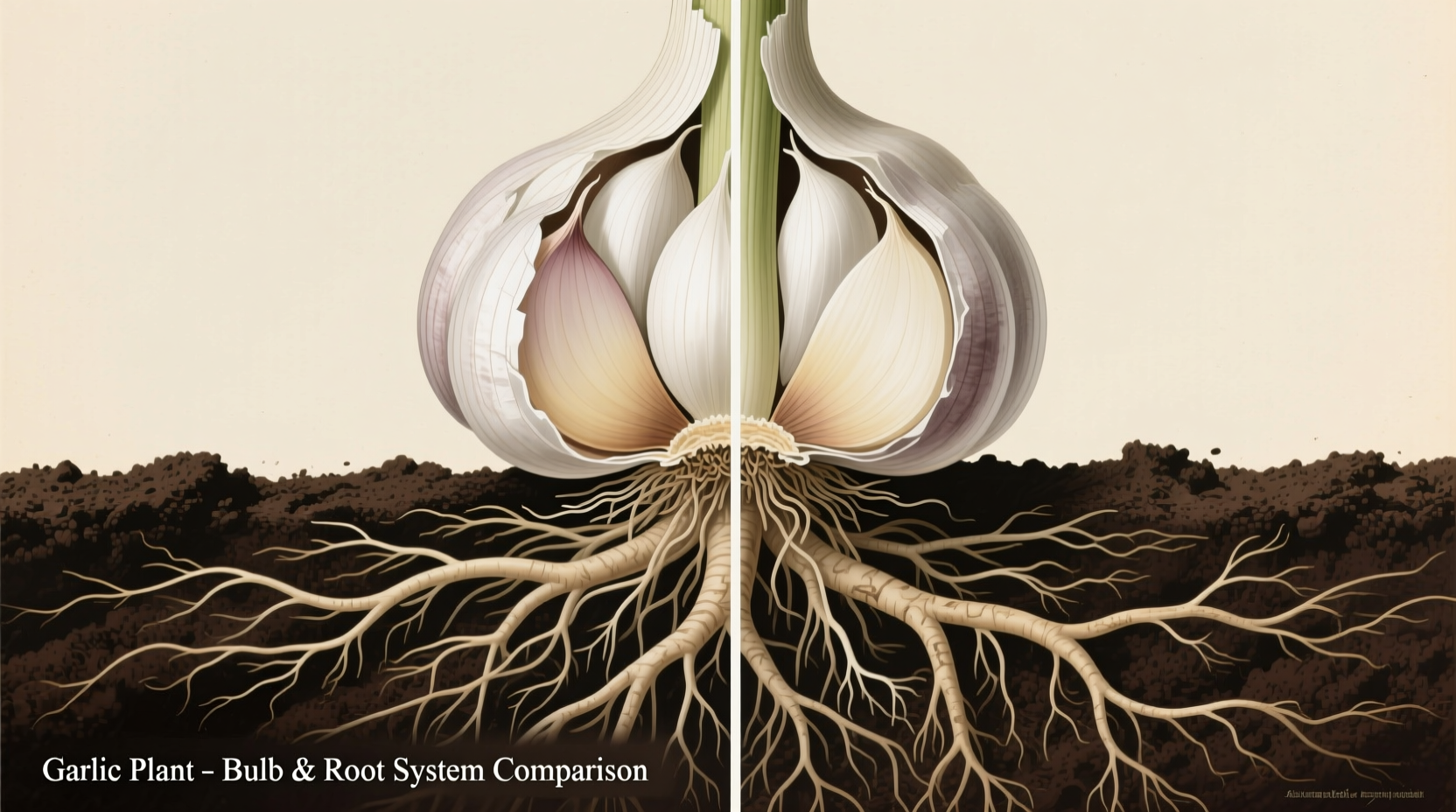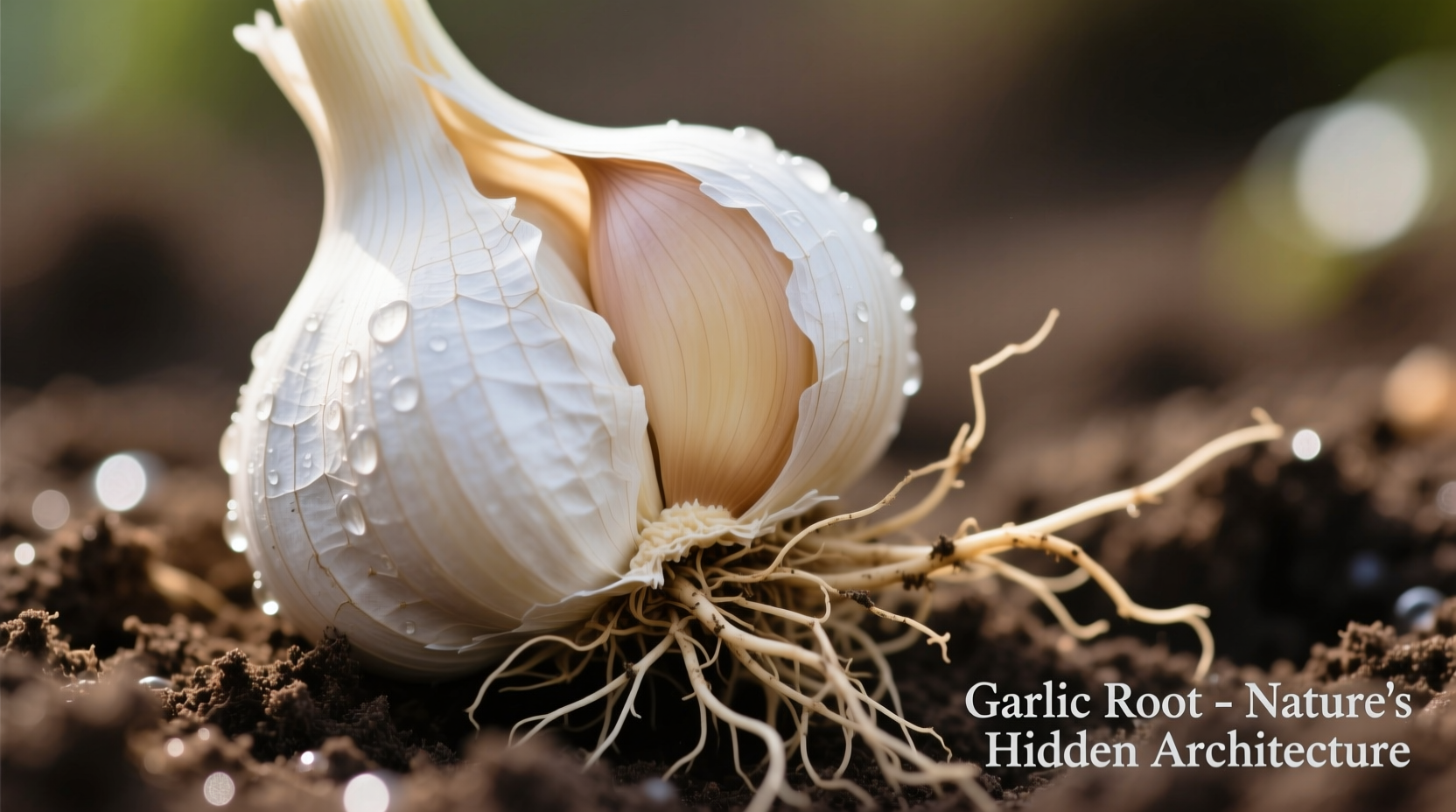When searching for "garlic root," you're likely encountering a common misconception. Botanically speaking, garlic (Allium sativum) doesn't have a culinary "root" as many believe. What's commonly referred to as garlic root is actually the bulb—a modified stem structure containing individual cloves. The true root system consists of thin, fibrous strands that develop underground and are never used in cooking.
Garlic Anatomy: Separating Fact from Fiction
Understanding garlic's structure prevents kitchen mistakes and gardening failures. The confusion stems from casual terminology versus botanical accuracy. Let's clarify each component with scientific precision:
| Component | Botanical Classification | Culinary/Gardening Use | Common Misconceptions |
|---|---|---|---|
| Bulb ("head") | Modified stem (storage organ) | Primary culinary component | Mistakenly called "root" |
| Cloves | Individual bulb segments | Used fresh, roasted, or preserved | Thought to be seeds |
| True root system | Fibrous adventitious roots | Supports plant growth only | Believed edible or flavorful |
| Scape (flower stalk) | Floral stem | Edible in some varieties | Often discarded unnecessarily |
This anatomical breakdown, verified by the USDA Natural Resources Conservation Service, explains why searching for "garlic root" yields confusing results. The bulb—what we cook with—functions as an energy storage organ, not a root.
Why the Confusion Exists
The term "garlic root" persists due to historical linguistic evolution. Garlic's journey through trade routes created terminology inconsistencies. According to research from USDA Agricultural Research Service, garlic cultivation spans over 5,000 years with terminology varying across cultures:
- Ancient Egypt: Called "stinking rose," with bulbs stored as currency
- Middle Ages: European texts mislabeled bulbs as "roots" due to underground growth
- Modern Misconception: Supermarket labeling perpetuates the error
Practical Implications for Cooks
Knowing garlic's true structure impacts your cooking in three critical ways:
- Selection: Choose firm bulbs with tight skin—avoid those showing root sprouts which indicate aging
- Preparation: Never remove the papery skin until ready to use—it protects flavor compounds
- Substitutions: Understand that "garlic root" powder doesn't exist—products labeled as such contain bulb material
When recipes mention "garlic root," they invariably mean the bulb. The University of California Cooperative Extension confirms that no culinary tradition uses actual garlic roots—they lack flavor compounds and become woody during growth.
Gardening Considerations: The Real Root System
For home growers, understanding garlic's actual root development is crucial. Unlike the bulb, the root system serves specific functions with clear limitations:
- Development Timeline: Roots emerge within 7-10 days after planting, reaching maximum spread by 60 days
- Soil Requirements: Needs loose, well-drained soil—compacted earth restricts root growth
- Critical Limitation: Roots cannot regenerate if damaged during weeding—use hand tools carefully
According to Cornell University's School of Integrative Plant Science, healthy root development directly impacts bulb size. Plants with restricted roots produce bulbs 30-40% smaller than those with unrestricted growth.

Storage Science: Preserving Your Garlic
Proper storage maintains bulb quality by controlling root-sprouting triggers. The National Onion Association recommends:
- Temperature: 60-65°F (15-18°C) with 60-70% humidity
- Airflow: Mesh bags or open baskets—never sealed containers
- Warning: Refrigeration triggers premature sprouting in most varieties
When stored correctly, hardneck varieties last 3-5 months while softnecks can remain viable for 6-8 months. The USDA Food Safety and Inspection Service confirms that sprouted garlic remains safe to eat, though flavor intensity decreases.
Common Questions Answered
Understanding these distinctions resolves frequent kitchen dilemmas. Whether you're selecting garlic at the market or troubleshooting garden growth, recognizing the bulb-root difference prevents common errors that compromise flavor and yield.











 浙公网安备
33010002000092号
浙公网安备
33010002000092号 浙B2-20120091-4
浙B2-20120091-4